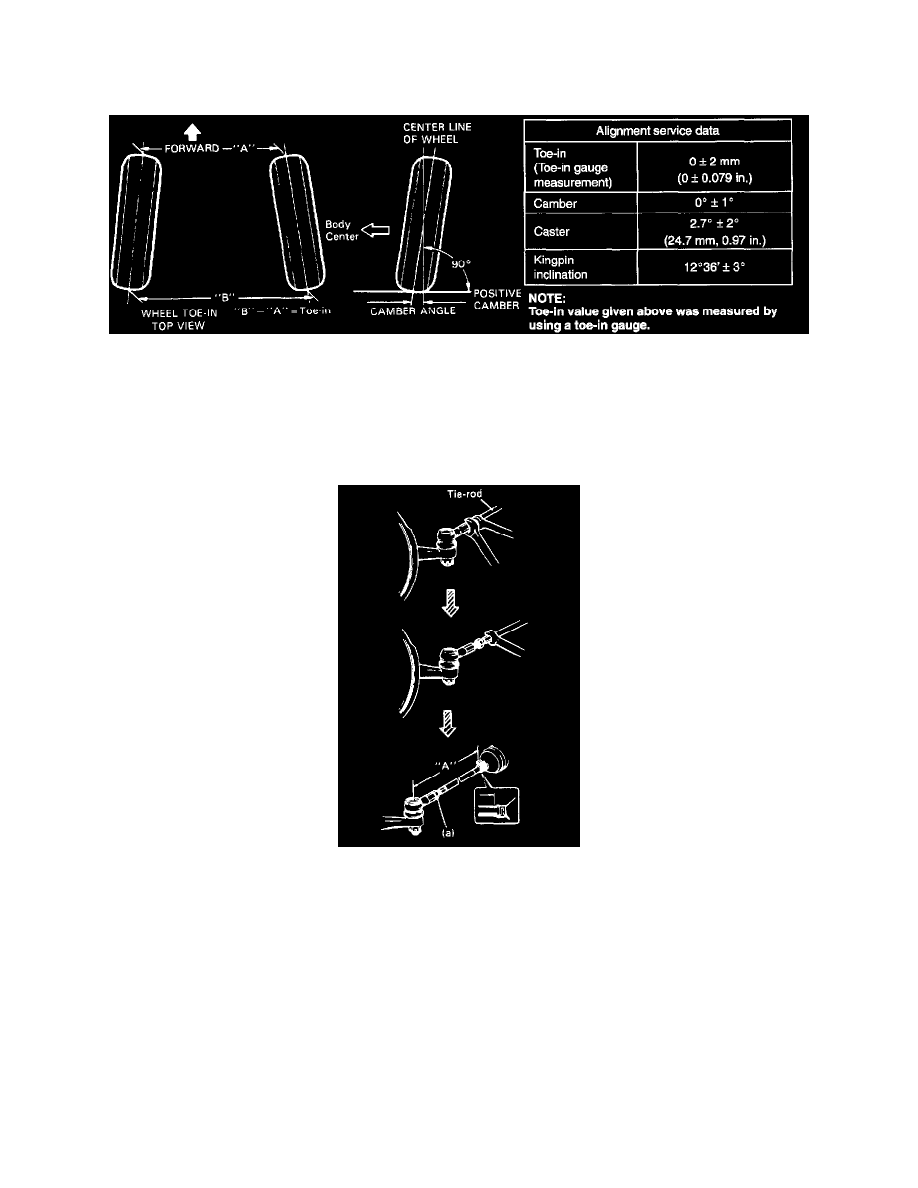Esteem GLX Wagon L4-1.8L (1999)

Alignment: Service and Repair
Front Wheel Alignment
SPECIFICATION
Front alignment refers to the angular relationship between the front wheels, the front suspension attaching parts and the ground. Generally, the only
adjustment required for front alignment is toe setting.
Camber and caster can't be adjusted. Therefore, should camber or caster be out of specification due to the damage caused by hazardous road
conditions or collision, whether the damage is in body or in suspension should be determined. If the body is damaged, it should be repaired and if
suspension is damaged, it should be replaced.
TOE ADJUSTMENT
Toe is adjusted by changing the tie rod length. Loosen right and left tie rod end lock nuts first and then rotate right and left tie rods by the same
amount to align toe-in to specification. In this adjustment, right and left tie rods should become equal in length ("A" in figure shown).
Before rotating tie rods, apply grease between tie rods and rack boots so that boots won't be twisted.
After adjustment, tighten lock nuts to specified torque and make sure that rack boots are not twisted.
Tightening Torque (a): 45 Nm (4.5 kg-m, 33.0 ft. lbs.)
CAMBER AND CASTER ADJUSTMENT
Should camber or caster be found out of specifications upon inspection, locate its cause first. If it is in damaged, loose, bent, dented or worn
suspension parts, they should be replaced. If it is in vehicle body, repair it so as to attain specifications.
To prevent possible incorrect reading of camber or caster, vehicle front end must be moved up and down a few times before inspection.
STEERING ANGLE
